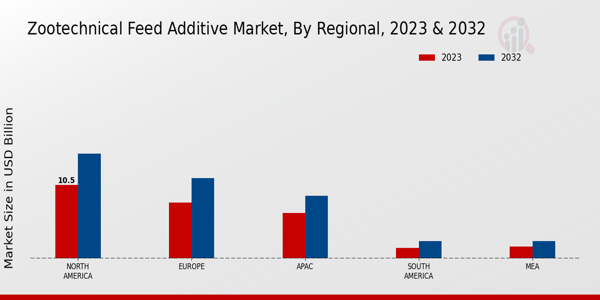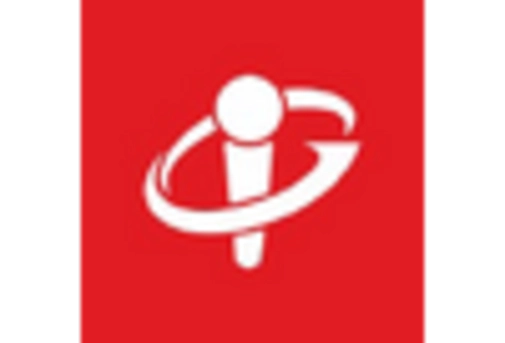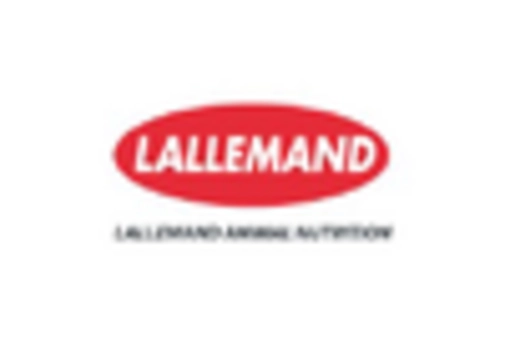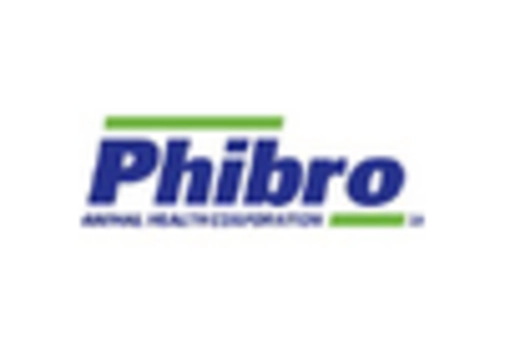Rising Demand for Animal Protein
The increasing global population and the corresponding rise in demand for animal protein are driving the Global Zootechnical Feed Additive Market Industry. As consumers seek higher protein diets, livestock production must intensify to meet these needs. This trend is particularly evident in developing regions, where meat consumption is projected to rise significantly. The Global Zootechnical Feed Additive Market Industry is expected to play a crucial role in enhancing livestock productivity and health, thereby supporting the anticipated growth in animal protein supply. By 2024, the market is valued at approximately 30.6 USD Billion, reflecting the urgency of addressing protein demands.
Focus on Animal Health and Welfare
There is a growing emphasis on animal health and welfare, which is influencing the Global Zootechnical Feed Additive Market Industry. Consumers are increasingly concerned about the conditions in which animals are raised, prompting producers to adopt practices that enhance animal well-being. Feed additives that promote gut health, improve immunity, and reduce disease incidence are becoming essential components of livestock diets. This shift not only meets consumer expectations but also aligns with regulatory standards aimed at improving animal welfare. As a result, the market is likely to expand, with projections indicating a growth to 47.6 USD Billion by 2035.
Regulatory Support for Feed Additives
Regulatory frameworks supporting the use of feed additives are shaping the Global Zootechnical Feed Additive Market Industry. Governments worldwide are recognizing the benefits of feed additives in promoting animal health and enhancing food safety. This regulatory support facilitates the approval and commercialization of innovative feed products, thereby encouraging investment in research and development. As regulations evolve to accommodate new technologies and practices, the market is expected to expand. This supportive environment is crucial for fostering innovation and ensuring that the industry can meet the growing demands of livestock production.
Technological Advancements in Feed Production
Technological innovations in feed production are significantly impacting the Global Zootechnical Feed Additive Market Industry. Advances in biotechnology, such as the development of precision fermentation and enzyme technology, are enhancing the efficacy of feed additives. These technologies allow for the creation of more targeted and effective products that can improve feed conversion rates and overall animal performance. As producers seek to optimize their operations and reduce costs, the adoption of these advanced feed additives is expected to rise. This trend is likely to contribute to a compound annual growth rate of 4.11% from 2025 to 2035, reflecting the market's dynamic evolution.
Sustainability Initiatives in Livestock Production
Sustainability initiatives are increasingly influencing the Global Zootechnical Feed Additive Market Industry. As environmental concerns grow, the livestock sector is under pressure to adopt more sustainable practices. Feed additives that enhance feed efficiency and reduce waste are becoming vital in achieving sustainability goals. These initiatives not only address environmental impacts but also improve the economic viability of livestock operations. By integrating sustainable practices, producers can enhance their market competitiveness while contributing to global sustainability efforts. The ongoing shift towards sustainability is expected to drive further growth in the market.






















Leave a Comment